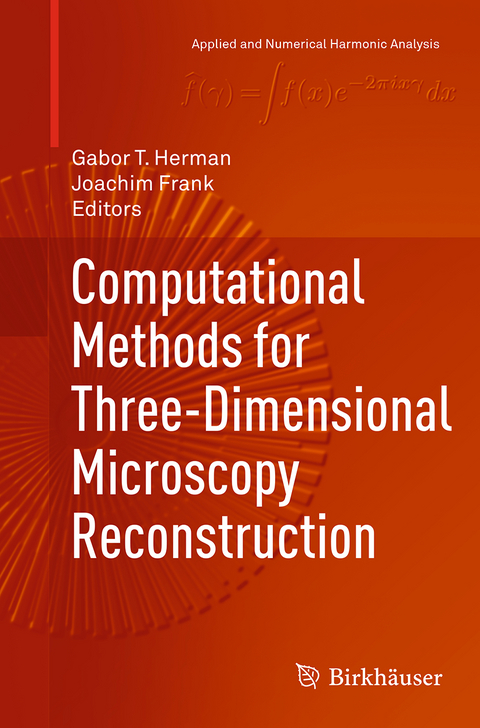
Computational Methods for Three-Dimensional Microscopy Reconstruction
Seiten
2016
|
Softcover reprint of the original 1st ed. 2014
Birkhauser Boston Inc (Verlag)
978-1-4939-4691-4 (ISBN)
Birkhauser Boston Inc (Verlag)
978-1-4939-4691-4 (ISBN)
Approaches to the recovery of three-dimensional information on a biological object, which are often formulated or implemented initially in an intuitive way, are concisely described here based on physical models of the object and the image-formation process. Both three-dimensional electron microscopy and X-ray tomography can be captured in the same mathematical framework, leading to closely-related computational approaches, but the methodologies differ in detail and hence pose different challenges. The editors of this volume, Gabor T. Herman and Joachim Frank, are experts in the respective methodologies and present research at the forefront of biological imaging and structural biology.
Computational Methods for Three-Dimensional Microscopy Reconstruction will serve as a useful resource for scholars interested in the development of computational methods for structural biology and cell biology, particularly in the area of 3D imaging and modeling.
Computational Methods for Three-Dimensional Microscopy Reconstruction will serve as a useful resource for scholars interested in the development of computational methods for structural biology and cell biology, particularly in the area of 3D imaging and modeling.
1 Introduction.- 2 Interchanging geometry conventions in 3DEM: Mathematical context for the development of standards.- 3 Fully automated particle selection and verification in single-particle cryo-EM.- 4 Quantitative analysis in iterative classification schemes for cryo-EM applications.- 5 High-resolution cryo-EM structure of the Trypanosoma brucei ribosome of a case study.- 6 Computational methods for electron tomography of influenza virus.- 7 Reconstruction from microscopic projections with defocus-gradient and attenuation effects.- 8 Soft X-ray tomography imaging for biological samples.- 9 Using component trees to explore biological structures.
| Erscheinungsdatum | 11.09.2016 |
|---|---|
| Reihe/Serie | Applied and Numerical Harmonic Analysis |
| Zusatzinfo | 59 Illustrations, color; 52 Illustrations, black and white; XIII, 260 p. 111 illus., 59 illus. in color. |
| Verlagsort | Secaucus |
| Sprache | englisch |
| Maße | 155 x 235 mm |
| Themenwelt | Informatik ► Weitere Themen ► Bioinformatik |
| Mathematik / Informatik ► Mathematik ► Angewandte Mathematik | |
| Mathematik / Informatik ► Mathematik ► Geometrie / Topologie | |
| Mathematik / Informatik ► Mathematik ► Graphentheorie | |
| Naturwissenschaften ► Biologie ► Genetik / Molekularbiologie | |
| Schlagworte | classification • computational methods • Inverse Problems • structural biology • three-dimensional microscopy reconstruction |
| ISBN-10 | 1-4939-4691-9 / 1493946919 |
| ISBN-13 | 978-1-4939-4691-4 / 9781493946914 |
| Zustand | Neuware |
| Haben Sie eine Frage zum Produkt? |
Mehr entdecken
aus dem Bereich
aus dem Bereich
Internationale statistische Klassifikation der Krankheiten und …
Buch | Softcover (2023)
Deutscher Ärzteverlag
CHF 34,95
Operationen- und Prozedurenschlüssel; Internationale Klassifikation …
Buch | Softcover (2023)
Deutscher Ärzteverlag
CHF 34,95


